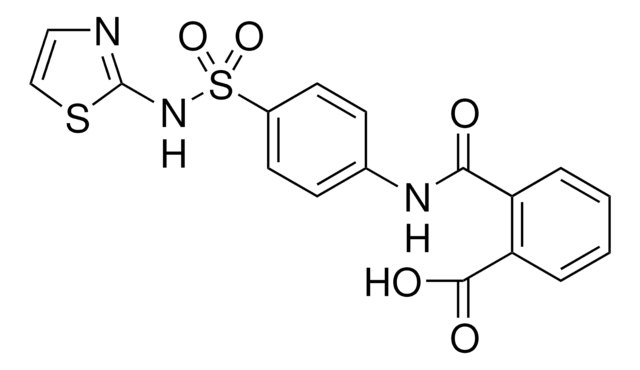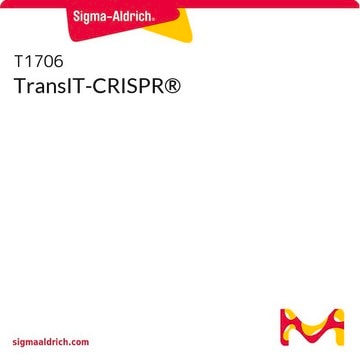XTGHP-RO
Roche
X-tremeGENE™ HP DNA Transfection Reagent
High-performance polymer reagent for transfecting many cell lines
Sign Into View Organizational & Contract Pricing
All Photos(6)
About This Item
UNSPSC Code:
41106502
NACRES:
NA.55
Recommended Products
grade
for molecular biology
Quality Level
form
liquid (aqueous solution)
usage
mL (suitable for 165 transfections)
packaging
pkg of 0.4 mL (06366244001)
pkg of 1.0 mL (06366236001)
pkg of 5 × 1 mL (06366546001)
manufacturer/tradename
Roche
technique(s)
transfection: suitable
storage temp.
−20°C
General description
X-tremeGENE HP DNA Transfection Reagent is a multi-component reagent that forms a complex with DNA , then transports the complex into animal or insect cells.
Features and Benefits
X-tremeGENE HP DNA Transfection Reagent is a high performance reagent that transfects a broad range of eukaryotic cells, including insect cells and hard-to-transfect cell lines (e.g., Sf9, U-2 OS, MEF, MCF7, Hep G2, PC-3, HeLa, HT-29, HT-1080, K-562, RAW 264.7, Jurkat, PC-12, and HCT 116).
- Benefit from an easy-to-use non-liposomal reagent that is free of animal-derived components, stable at room temperature, filtered through 0.2 μm pore size membrane, and active in serum-containing medium.
- Achieve new levels of transfection efficiency in primary cells and tumor cell lines that are not transfected well by other reagents.
- Generate physiologically relevant data using a reagent with low cytotoxic effects.
- Increase experimental throughput and enable target evaluation using a simple and consistent protocol.
Quality
Each lot of X-tremeGENE HP DNA Transfection Reagent is carefully tested following established quality procedures to ensure that the product is consistently performing according to specifications. During quality testing, cells are transfected with a reporter gene vector DNA using X-tremeGENE HP DNA Transfection Reagent (ratio 3:1 ¼l/¼g DNA). Reporter gene activity is monitored via chemiluminescent detection. Using a standard curve, the total amount of recombinant protein is determined per well in order to meet specification.
Physical form
Supplied in 80% ethanol and sterile-filtered through 0.2 μm pore size membrane. Does not contain any ingredients of human or animal origin.Number of Tests: Using the standard procedure, 1 ml of X-tremeGENE HP DNA Transfection Reagent can be used to perform up to 10,000 transfections in 96-well plates.
Other Notes
For life science research only. Not for use in diagnostic procedures.
Legal Information
X-tremeGENE is a trademark of Roche
related product
Product No.
Description
Pricing
Signal Word
Danger
Hazard Statements
Precautionary Statements
Hazard Classifications
Eye Irrit. 2 - Flam. Liq. 2
Storage Class Code
3 - Flammable liquids
WGK
WGK 1
Flash Point(F)
334.4 °F
Flash Point(C)
168 °C
Certificates of Analysis (COA)
Search for Certificates of Analysis (COA) by entering the products Lot/Batch Number. Lot and Batch Numbers can be found on a product’s label following the words ‘Lot’ or ‘Batch’.
Already Own This Product?
Find documentation for the products that you have recently purchased in the Document Library.
Customers Also Viewed
Isabelle Coupienne et al.
Photochemical & photobiological sciences : Official journal of the European Photochemistry Association and the European Society for Photobiology, 10(12), 1868-1878 (2011-10-29)
Glioblastoma constitute the most frequent and deadliest brain tumors of astrocytic origin. They are resistant to all current therapies and are associated with a high rate of recurrence. Glioblastoma were previously shown to respond to treatments by 5-aminolevulinic acid (5-ALA)-based
Xin Yong et al.
Cancer letters, 374(2), 292-303 (2016-03-05)
Helicobacter pylori (H. pylori) infection is considered a major risk factor for gastric cancer. CagA behaves as a major bacterial oncoprotein playing a key role in H. pylori-induced tumorigenesis. Cancer stem cells (CSCs) are believed to possess the ability to initiate tumorigenesis
Takashi Yoshino et al.
Cellular and molecular neurobiology, 31(7), 1009-1020 (2011-04-27)
A synthetic analog of sphingosine named FTY720 (Fingolimod), phosphorylated by sphingosine kinase-2, interacts with sphingosine-1-phosphate (S1P) receptors expressed on various cells. FTY720 suppresses the disease activity of multiple sclerosis (MS) chiefly by inhibiting S1P-dependent egress of autoreactive T lymphocytes from
Abazar Roustazadeh et al.
SpringerPlus, 5(1), 711-711 (2016-07-05)
Matrix Gla protein (MGP) is involved in calcium trafficking and arterial calcification. The aim of study was to investigate the role of three polymorphisms within the MGP gene promoter region on reporter gene (luciferase) expression level. The fragments containing rs1800799
Laura M Griffin et al.
Methods in molecular biology (Clifton, N.J.), 1195, 219-238 (2013-11-28)
Human papillomaviruses (HPVs) are non-enveloped DNA viruses that are highly tropic for mucosal and cutaneous epithelia. The HPV life cycle is tightly linked to epithelial cell differentiation, where HPVs only infect the basal proliferating keratinocytes, and progeny virus assembly and
Our team of scientists has experience in all areas of research including Life Science, Material Science, Chemical Synthesis, Chromatography, Analytical and many others.
Contact Technical Service













